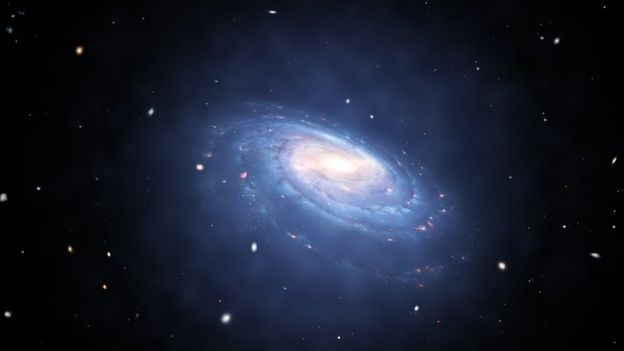NGC1052-DF2’s discovery has driven astrophysicists on the mission for more dark matter insufficient galaxies.
Roughly 65 million light-years away from Earth is a galaxy called NGC 1052-DF2 (DF2 for short). But DF2 may as well be called F-U, because that’s what it’s saying to scientists who thought they understood galaxies, dark matter, and really anything about our universe.
What makes DF2 so special, you may ask? It appears to contain virtually no dark matter.
We’ve never seen dark matter directly. We only believe dark matter exists because we can see how it affects “regular,” or baryonic, matter. Based on these indirect observations, researchers have estimated that dark matter makes up about 27 percent of our universe.
Since dark matter was (sort of) discovered, researchers assumed dark matter was essential to galaxy formation. Dark matter would clump together. Then, the gravity from those clumps would attract baryonic matter, forming the stars, planets, and other objects we can actually see within a galaxy. Easy, right?
Based on this understanding, the team studying DF2 thought they had a pretty good idea how much dark matter it contained. But when they calculated how much dark matter DF2 actually had, they discovered it contained only 1/400th the amount they expected.
“It challenges the standard ideas of how we think galaxies work,” Pieter van Dokkum, a Yale University professor and lead author of a paper on DF2, now published in Nature, said in a press release. “This result also suggests that there may be more than one way to form a galaxy.”
DF2 is unique in other ways, too. It doesn’t fit the characteristics of a spiral galaxy, which typically have dense, central regions, spiral arms, and a disk. But it also isn’t like known elliptical galaxies, which have a black hole at their center.
Instead, DF2 is a rare ultra-diffuse galaxy. “It’s so sparse that you see all of the galaxies behind it,” van Dokkum said. “It is literally a see-through galaxy.”
This might seem counterintuitive, but DF2 actually supports the existence of dark matter, which some theories argue doesn’t exist.
“For those kinds of theories, it wouldn’t be possible to ever have a galaxy that looks as though it doesn’t have dark matter,” Jocelyn Monroe, a particle physicist and dark matter expert at Royal Holloway, University of London, who was not involved in the study, told The Verge. “So [this galaxy is] really interesting for the potential it has to exclude some of these ideas.”
The researchers hope to pin down the age of DF2. “At the moment, we only know its older than 10 billion years, but we’d like to know if it’s 10 billion years old or 13 billion years old, which is right after the Big Bang,” van Dokkum told ABC.
If DF2 does end up being 13 billion years old, it could rack in another superlative: the oldest galaxy ever discovered.















